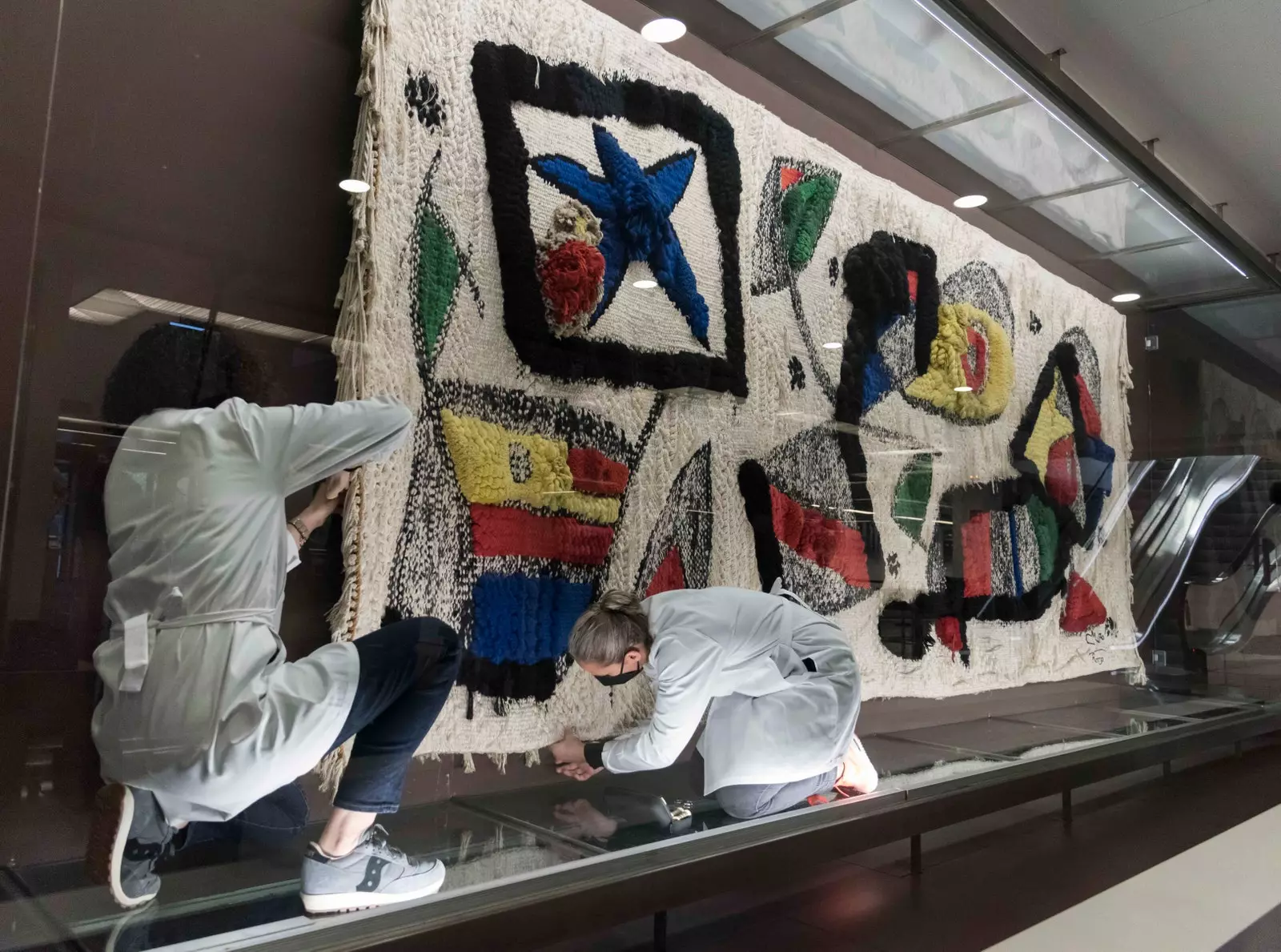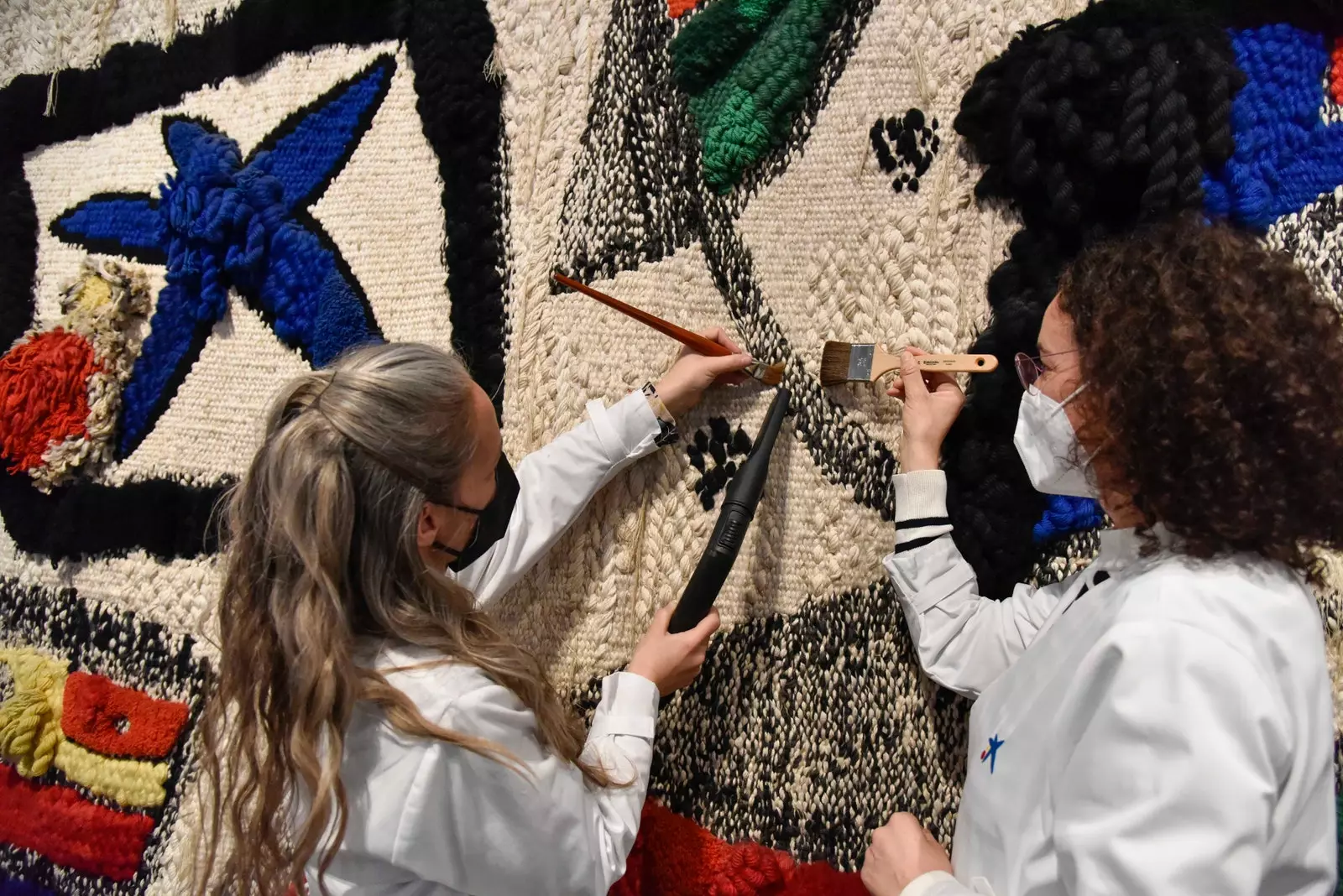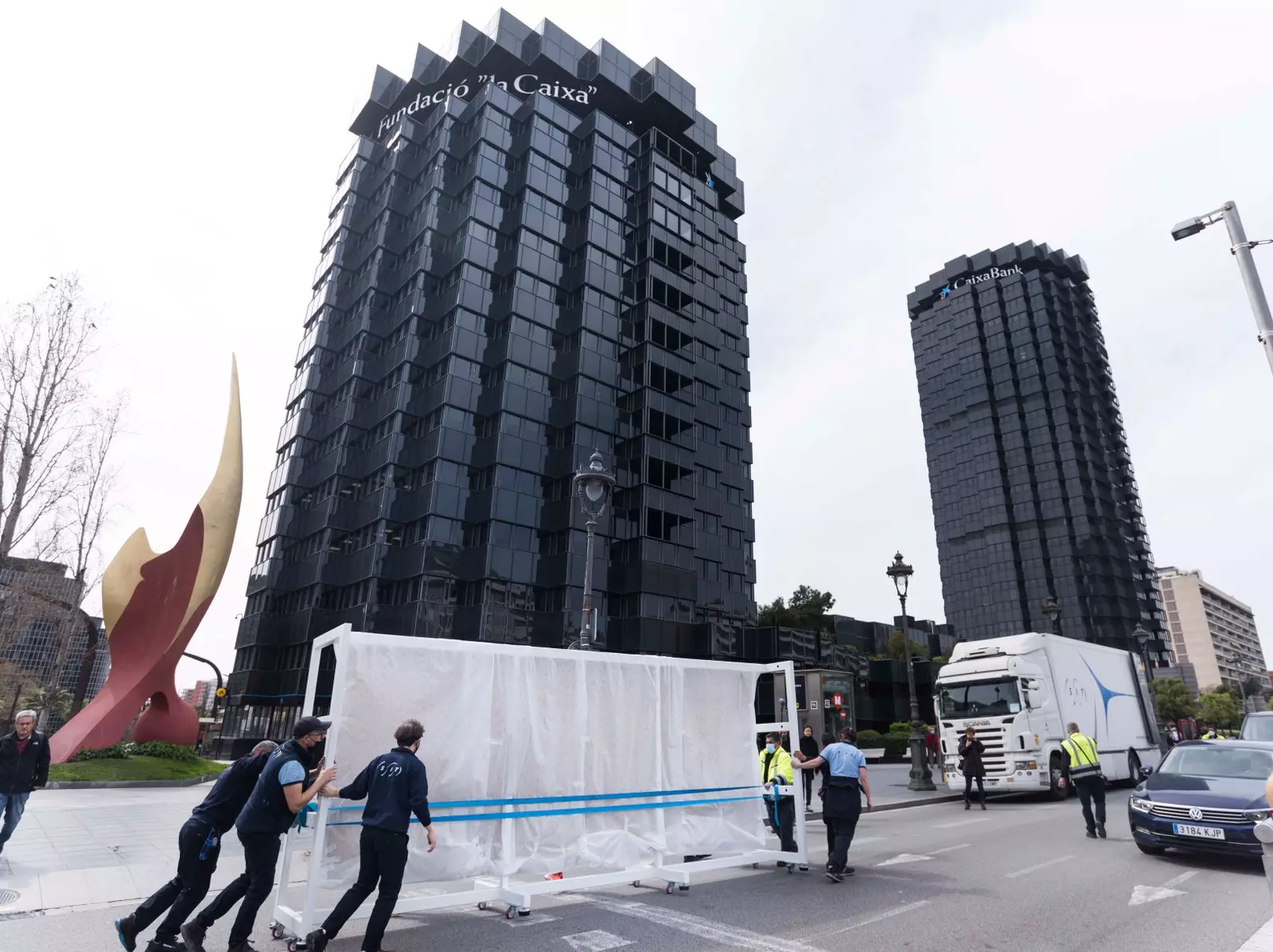It was in 1980 when Joan Miro and the textile artist Joseph Royo created for La Caixa 'Tapestry' , a work commissioned by the entity that became a monumental tapestry, exhibited for the first time in November 1980 in the exhibition ' Joan Miro'.
The great coming-out of the tapestry was the inauguration of the Museum of Science (today, CosmoCaixa) on June 2, 1981. It was exhibited at the entrance to the center until 1984, the year in which it was moved to the lobby of the entity's new headquarters, on Diagonal Avenue. There it has remained uninterruptedly hanging for the last 38 years, where only workers and visitors have been able to appreciate it all this time.
Now, it returns to the CaixaForum in Barcelona under the title of 'Miró's star', in a project that proposes that the public be able to contemplate this work by Miró for the first time in 38 years and, at the same time, understand the process of its creation by attending its restoration live . "Visitors will be able to learn about the history of the Miró star that forms the emblem of the entity and observe the rehabilitation of the fibers of the tapestry to understand how environmental conditions affect them," they explain in a statement.
In the room where the work will be restored, a small museum project has been prepared, with images, videos and texts, which recovers the history of the tapestry and revalues the textile technique, as well as the work of the team of collaborators of the farinera , made up mostly of women, unknown protagonists when talking about the tapestry.
After the completion of the project, the tapestry will return to the lobby of the entity's Central Services , where it will be exhibited in a new display case that will improve the control of the environmental conditions of the exhibition.

Its restoration will go through several phases, all visible to the visitor.
See images: The best brunches in Barcelona
AN EXPERIMENTAL WORK
The “la Caixa” Foundation Tapestry is 5 meters long by 2 meters high and a weight of more than 200 kg, and its main materials are wool, cotton and hemp. It is one of the seven large tapestries that Miró made during the 1970s in one of his last expressive adventures, in collaboration with the textile craftsman Joseph Royo , with whom he also created 32 small format tapestries, called sobreteixims , works that are halfway between painting, collage and tapestry. La Farinera, an old factory in Tarragona, became the experimental space for most of these pieces.
“Experimentation is something intrinsic to the work of Joan Miró. His innate curiosity led him beyond painting, to try out new territories such as collage, bronze sculpture, engraving or even textile work”.

The live restoration of the Tapestry.
Behind the vision of the tapestry's artistic creators is the work of the collaborators , a team, made up mostly of women, who worked on making the piece for months; They are always unknown protagonists when talking about the tapestry. The usual team of weavers was made up of tapestry students from the Tarragona School of Art.
“Royo and his team's task was based on interpreting the work of Joan Miró with all the nuances of colour, textures and volumes, and also capturing the artist's poetic expression, sensitivity and emotion. They knew how to give a new dimension to the use of textile techniques in a world in which knots, reliefs and thicknesses acquired their own entity”.

The transfer is also a key phase of the restoration.
IN DATA
Where to visit: CaixaForum Barcelona (av. Francesc Ferrer i Guàrdia, 6-8).
Schedule: Open until May 21. From Monday to Friday, from 4:00 p.m. to 8:00 p.m. Weekends and holidays, from 10 a.m. to 8 p.m.
Price: Free with reservation.
